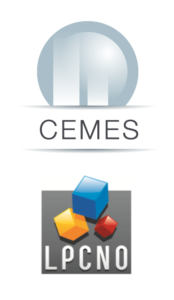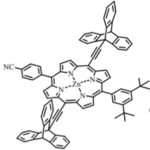Research project selected under the 2020 call for proposals

Principal Investigator : Xavier BOUJU
Involved Teams :
- CEMES / Nanosciences group
- LPCNO / Physical and Chemical Modelization group
Type of project : Collaborative Project
Date (start/end) : 2020 – 2023

Olivier Guillermet (Cemes, Toulouse).
The STEFE project aims at studying, mainly theoretically, the local electric field (EF) inside a scanning-tunneling-microscope (STM) junction. This EF is usually generated by a bias voltage applied between the local probe and the metallic substrate. Due to the tip shape, a more or less strong enhancement of the EF exists beneath the apex and can modify the adsorption state of a single atom or a single molecule according to the bias voltage and the tip-surface distance. Without an atomic-scale description of the tip apex and its effects on the adsorbates, the EF effect remains unclear. We plan to rationalize the possible EF enhancement in various situations with the help of DFT calculations, as well as a N-body order method. We shall apply our numerical methodology to molecular adsorbates with an increasing complexity, starting with single atoms to complexe molecules dedicated to the NanoCar Race 2022 (NCR22).
The main goal of the STEFE project is to rationalize the electric field (EF) effect under a STM tip and its consequence on the dynamics of atomic and molecular adsorbates (bias voltage, tip height, tip shape, adsorbate dynamics, STM feedback loop…). In many situations the physical mechanisms occurring during STM manipulation of adsorbates are not well understood. This is why theoretical simulations can provide valuable information.
The energetic behavior of the adsorbate under a STM probe is controlled by four terms: the adsorbate interacts with the gold surface, with the tip (apex+support), and with the EF through the electrostatic induction energy. Careful attention will be devoted to the dispersion energy between the adsorbate and the tip apex: due to its structure, it includes all the contributions of N-body order between the adsorbate and the metallic atoms composing the apex. This will be determined in the framework of the coupled-mode method by solving a sequence of Dyson equations. Moreover, the EF will be computed using the localized field-susceptibility method. On the other hand, DFT calculations will serve:
- to build realistic geometries of the entire STM setup, i.e. by simulating explicitly in a single calculation cell, the metallic substrate, the adsorbed species (with van der Waals interactions), all in interaction with an explicit model of the tip,
- to extract the corresponding electrostatic potential and estimate charges by using partitioning schemes like Bader one for instance, to feed the model using the field-propagator method for extensive and quicker calculations,
- to investigate how the application of a bias voltage can alter the electronic structures and the potential energy landscapes.
We have identified two main key-steps in the working plan:
- a first period of work for the recruited associated researcher (with M2 internships) will be devoted to their familiarization with the computational settings. All the DFT calculations will be performed using VASP. Then, extraction of electrostatic potential, charges, dipole moments and the forces acting on it, for further manipulations, could be performed. Applications of moderate EF could be realized at this step, to investigate the two main effects of EF (with two basic systems, rare gas atom and CO molecule). And, even though the STEFE project is essentially theoretical, a fraction of it is dedicated to experiments performed with the low-temperature STM in GNS/Cemes (M2 internship).
- Then, we plan to study the effect of EF enhancement in the vicinity of the tip apex on models of molecules, as realistic as possible, that will be used during NRC22.
